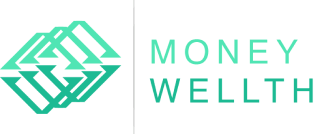Many financial experts are referring to the current economic situation in the US, and much of the world, as the “Everything Bubble”. Around the years 1995-2000 we had the tech bubble, otherwise known as the dot.com bubble, where the NASDAQ, which has a predominance of tech stocks, quintupled. The NASDAQ then plummeted by nearly 77% from 2000-2002. Fortunes were wiped out and companies with huge valuations and no earnings disappeared after first being valued at billions of dollars, without any real products or earnings. Remember pets.com? That company paid millions to advertise with their sock puppet during the 2000 Super Bowl. They were bankrupt by November of that same year.
The bear market from 2007-2009 was largely due to the “real estate” bubble. That’s when the subprime mortgage crises occurred. A subprime loan is a loan that is given to higher risk borrowers. Many people were able to get real estate loans with hardly any money down, and no real proof of income. Housing prices increased at a rapid pace. Flipping properties was the rage. People thought that gravy train would never end, until it did. Banks like Lehman brothers collapsed. Real estate prices plummeted, and they took almost ten years to recover. People had borrowed maximally to purchase houses, and when values tanked, many people suddenly owed more than the house was worth. At the time the real estate bubble popped, the stock market and bond market continued to do relatively well, so they were the “port in a storm”.
This brings us to today, “The Everything Bubble”. Stocks are at record valuations by almost every metric. Record levels of the Dow, S/P and the NASDAQ. See the Buffet Indicator as just one measurement of current extreme stock valuations. (The Buffett Indicator is the ratio of total US stock market valuation to the gross domestic product (GDP)). Currently, the Buffett indicator is saying that stocks are 64% higher than historical trends would indicate they should be.
Real estate is out of control now, also in a bubble. Housing prices historically rise about 2-3% annually. For the past few years, annual increases are >15%, pricing many potential buyers out of the market. Case Shiller Home Price Index
Then there are the bond markets, worth multiple times the value of the stock markets. Bonds have always been the traditional safe option for investors, paying out a predictable interest payment. Standard recommendations have always been to increase your percentage of bonds in investment portfolios as one gets closer to retirement. However, interest rates have been dropping since the 1980s. When rates drop, bond prices go up. Rates are near the lowest they have been in several thousand years of available historical data. Rates can’t go much lower, and now that inflation is starting to rise, bond interest rates almost always go up. Current holders of long-term bonds are getting very little interest and as rates go up, the price of the bond they hold will go down. Bonds are also in a bubble. Bond prices only have one direction to go from here, which is down.
How does someone invest in this environment? It is a very difficult question to answer. Stocks and bonds are in a bubble. With current inflation, cash is losing 7% of its purchasing power each year as it sits in the bank.
Extremely low interest rates, and quantitative easing (more money being put into the system by the federal reserve in order to shore up the economy) have caused all these asset classes to inflate in price.
In previous bubbles, investors who were worried about overvaluation of tech stocks or real estate could transfer funds to the other asset classes that were deemed less “frothy”. Where does an investor go today? If real estate, bonds, interest rates, or stocks were to return to historically “normal” levels, prices would have to decrease significantly in all those asset classes. There are pockets of areas that are relatively safer. Categories like commodities have been out of favor for the last decade but are going up now also.
Tread carefully, be aware of the everything bubble. The Fed is promising to end quantitative easing and increase interest rates. As this starts to happen over the next few months, that might be the “pin” that pops the everything bubble?
Disclaimer: This is in no way investment advice, just information to think about and be aware of.

